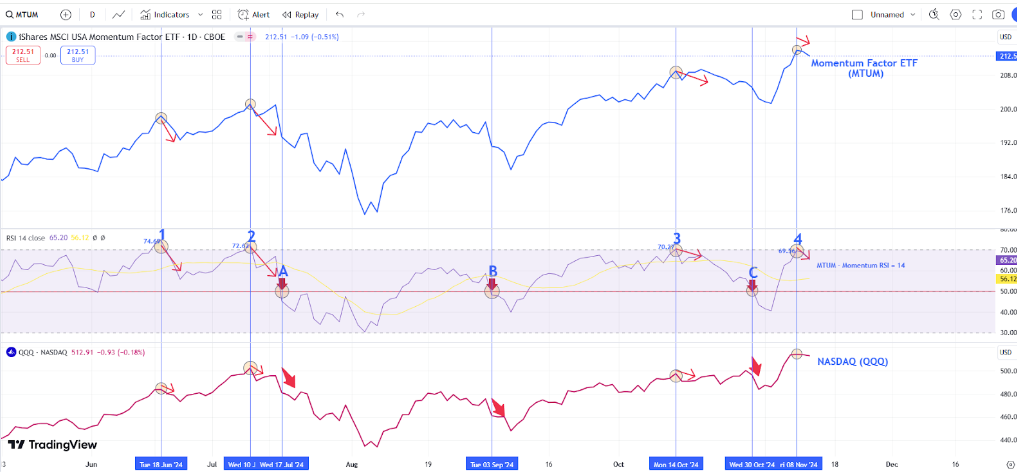
With the recent U.S Presidential election results finalized, markets have reacted positively with momentum, experiencing a swift upward surge in prices over a short period.
One of the market gauges we can use to assess market momentum is the Momentum Factor ETF (MTUM), which measures the performance of U.S. large & mid cap stocks that exhibit relatively higher price momentum.
We can analyze the technical chart of the Momentum Factor ETF (MTUM) and relatively compare it to the Nasdaq (QQQ) to identify any correlations that might be beneficial for our trading and investing analysis:
When we incorporate the Momentum/Relative Strength Index (RSI) indicator in our analysis of the MTUM ETF, and compare it to the Nasdaq (QQQ), we can identify several useful signals (as noted on the chart):
- #1 – #4: When the MTUM RSI Indicator starts falling from above the overbought (70) level reading, and the MTUM itself starts turning down, the QQQ’s are starting to retrace as well.
- #4: Observe that during the most recent upward attempt of MTUM prior to and after the election, the MTUM RSI Indicator failed to surpass the 70 overbought level (peaking at 69.56 on 11/8) and has since started to decline, along with MTUM beginning to turn slightly down. Meanwhile, the comparative QQQ remains relatively flat-to-slightly down as well.
- A, B, C: If we observe further deterioration in momentum, it’s important to note that when the MTUM RSI Indicator starts falling below the midpoint (50 level), the QQQ tends to accelerate sharply downward.
Any further decline (or uptick) in the MTUM price and RSI Indicator can be monitored as an additional momentum gauge for broader-based U.S. large and mid-cap equities.
Remember: Momentum can shift suddenly. It’s crucial to stay on top of it, and move quickly into new trade setups when that happens.
Happy Trading!







